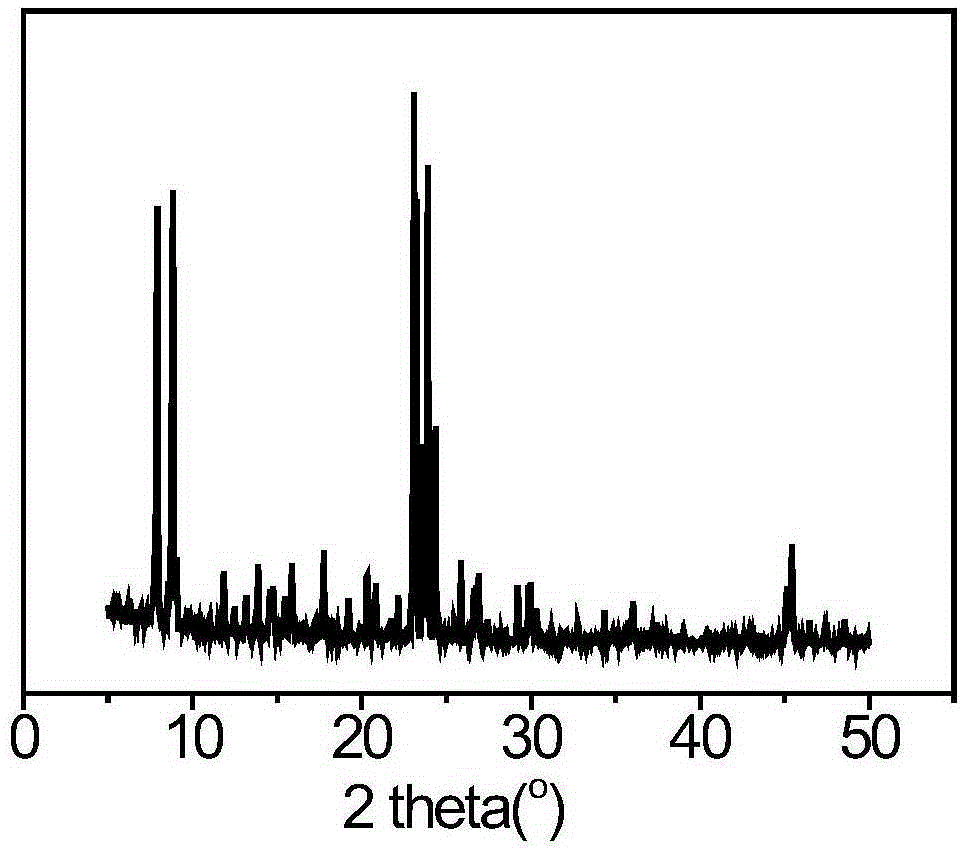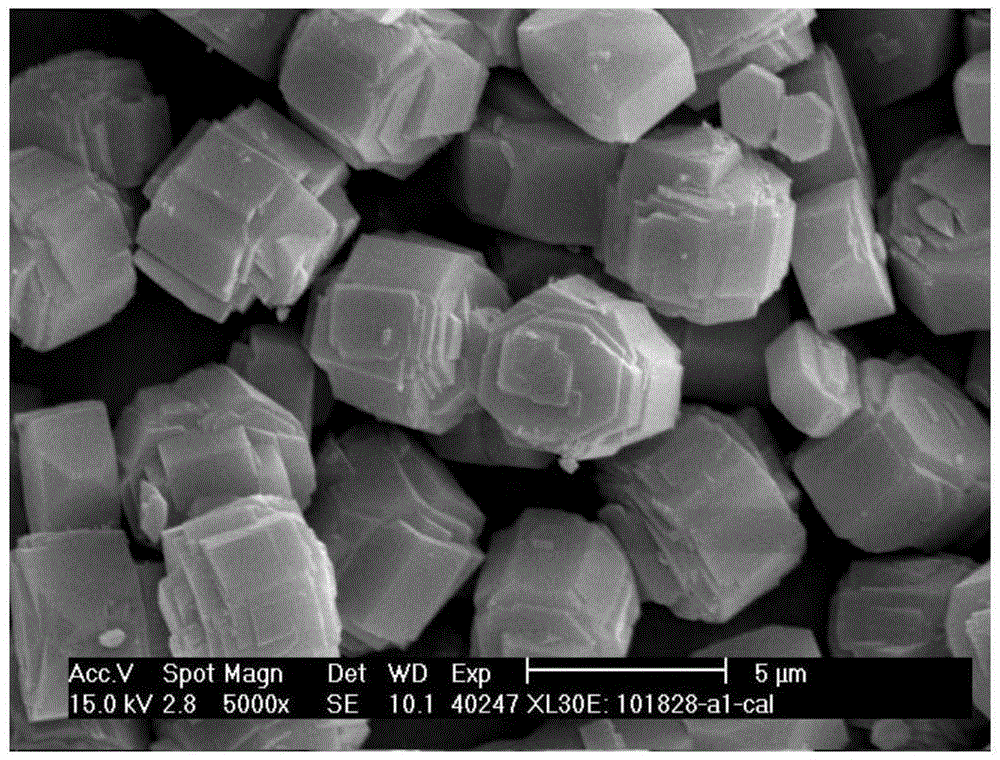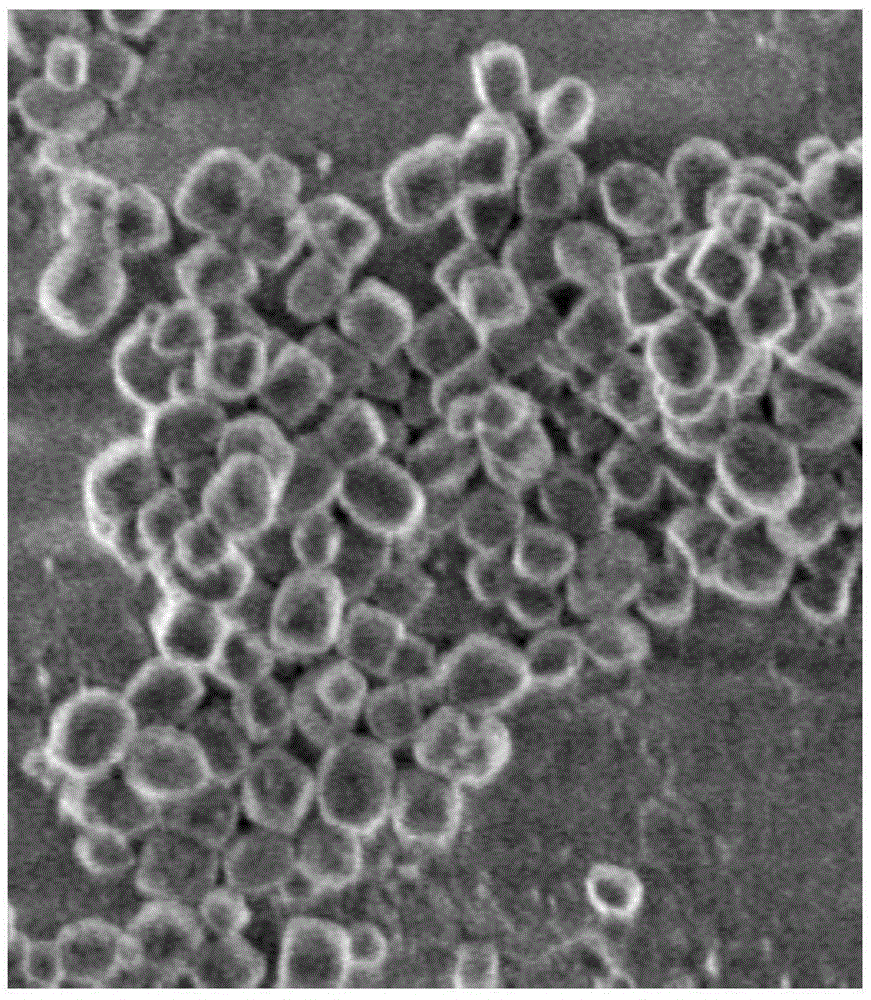Method for effectively controlling particle size of ZSM-5 by virtue of silicon polymerization degree and aluminum polymerization degree
A ZSM-5, polymerization degree technology, applied in the direction of crystalline aluminosilicate zeolite, borocarbonane silicone crystalline aluminosilicate zeolite, nanotechnology, etc., can solve the problems of cumbersome preparation process, large environmental pollution, and difficulty in industrialization. , to achieve the effect of reducing environmental pollution, avoiding cumbersome steps, and suitable for industrialization
- Summary
- Abstract
- Description
- Claims
- Application Information
AI Technical Summary
Problems solved by technology
Method used
Image
Examples
Embodiment 1
[0027] Synthetic method: Add 15g of water, 0.051g of aluminum sulfate octadecahydrate, and 12g of tetrapropylammonium hydroxide into the reaction kettle. After stirring evenly, slowly add 5g of silica sol with a mass fraction of 40% during the stirring process, and add Sodium hydroxide, control the degree of polymerization of silicon to 200, stir for 30 minutes, and age the gel at room temperature. After that, crystallize at 180°C for 2 days under stirring at 150rpm, after cooling to room temperature, wash and centrifuge with deionized water for 3 times, and dry at 80°C for 12 hours to obtain the final product Z-1.
[0028] figure 1 It is the XRD spectrogram of the product obtained in Example 1, it can be seen that the product has the characteristic diffraction peak of ZSM-5, and has a higher crystallinity. figure 2 It is the SEM photo of the product obtained in Example 1. It can be seen that the sample presents a spherical shape, and the particle size is 3 microns.
Embodiment 2
[0030] Using the same conditions as in Example 1, after stirring evenly, slowly add 6.93 g of ethyl orthosilicate dropwise during the stirring process, add sodium hydroxide, control the degree of silicon polymerization to 80, stir for 30 minutes, and age the gel at room temperature. After that, it was crystallized at 180°C and 150rpm for 2 days, cooled to room temperature, washed and centrifuged with deionized water for 3 times, and dried at 80°C for 12 hours to obtain the final product Z-2. According to the XRD characterization results of the sample, it can be seen that the product has ZSM-5 characteristic diffraction peaks, image 3 It is the SEM photo of the product obtained in Example 2, indicating that the sample presents a spherical shape, and the particle size is 100-200 nanometers.
Embodiment 3
[0032] Using the same conditions as in Example 1, after stirring evenly, slowly add 2 g of silicon powder dropwise during the stirring process, add sodium hydroxide, control the degree of polymerization of silicon to 100, stir for 30 minutes, and age the gel at room temperature. After that, it was crystallized at 180°C and 150rpm for 2 days, cooled to room temperature, washed and centrifuged with deionized water for 3 times, and dried at 80°C for 12 hours to obtain the final product Z-3. According to the XRD characterization results of the sample, it can be seen that the product has ZSM-5 characteristic diffraction peaks, Figure 4 It is the SEM photograph of the product obtained in Example 3, indicating that the sample presents a spherical shape, and the particle size is 2 microns.
PUM
| Property | Measurement | Unit |
|---|---|---|
| particle diameter | aaaaa | aaaaa |
| diameter | aaaaa | aaaaa |
Abstract
Description
Claims
Application Information
 Login to View More
Login to View More - R&D
- Intellectual Property
- Life Sciences
- Materials
- Tech Scout
- Unparalleled Data Quality
- Higher Quality Content
- 60% Fewer Hallucinations
Browse by: Latest US Patents, China's latest patents, Technical Efficacy Thesaurus, Application Domain, Technology Topic, Popular Technical Reports.
© 2025 PatSnap. All rights reserved.Legal|Privacy policy|Modern Slavery Act Transparency Statement|Sitemap|About US| Contact US: help@patsnap.com



